We already know how the Royal Enfield Classic 650 rides on good roads overseas, now we find out how it fares at home.
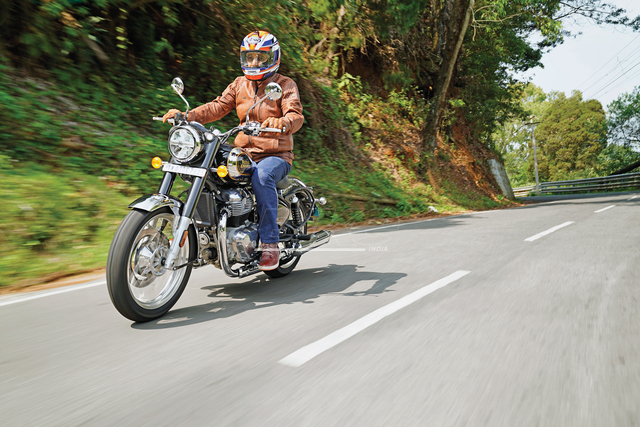
Story: Joshua Varghese
Photography: Sanjay Raikar
The Royal Enfield Classic 650 Twin’s first ride experience took place on some lovely countryside roads in the United Kingdom. With the Isle of Man TT racer, Jack Fowler, leading the way, it was a fast ride on some amazing switchbacks and we returned to India quite impressed by the motorcycle (see Bike India, November 2024 issue). The Classic 650’s suspension is set up on the firmer side and while it was not a problem in the UK, it was among the aspects we looked forward to testing in India. When presented with the opportunity, that is what we did; but before discussing suspension, one must address this motorcycle’s timeless aesthetic.
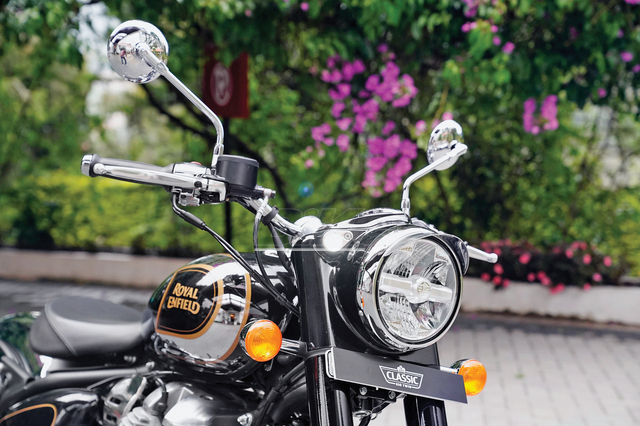
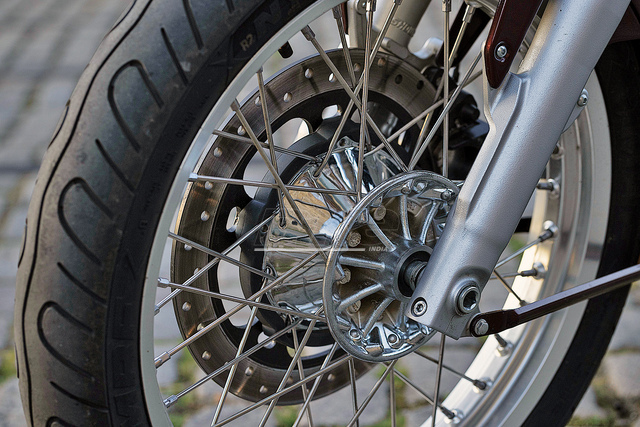
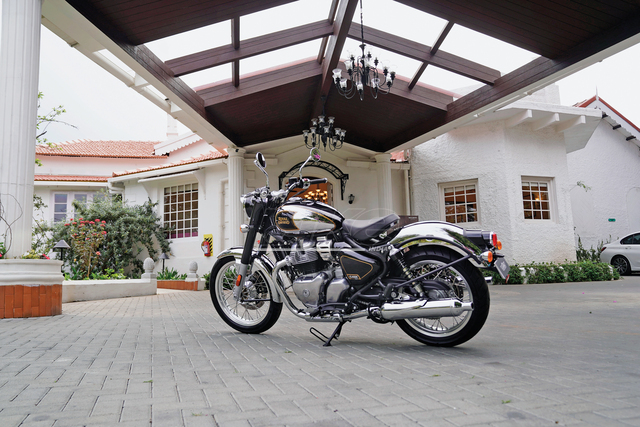
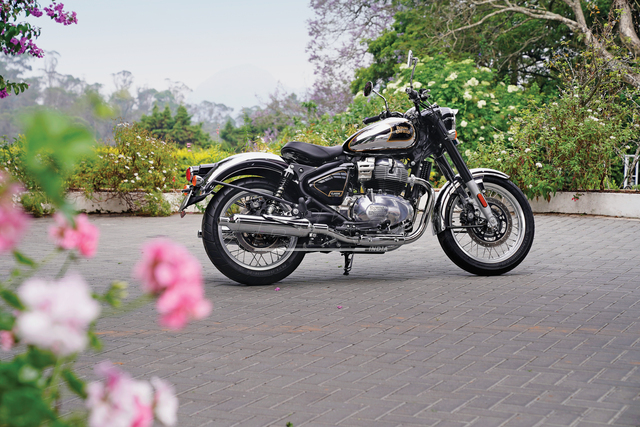
Royal Enfield’s levels of fit-and-finish have improved significantly, to the point where they can stand shoulder to shoulder with some of the globally reputed manufacturers, but with the Classic 650 they have also showcased remarkable workmanship, and this is particularly evident in the Black Chrome colour of this motorcycle. When polished to a high shine, it is akin to art; something that struck me when I caught it glinting in the sunlight. A visual effect that translates well when the motorcycle is in motion too. With such attention to detail, we genuinely believed it would be the most expensive 650 Twin of the lot but, fortunately, it is not. In India, the Classic 650 is the third most accessible 650 after the Interceptor and Continental GT. That is superb value.
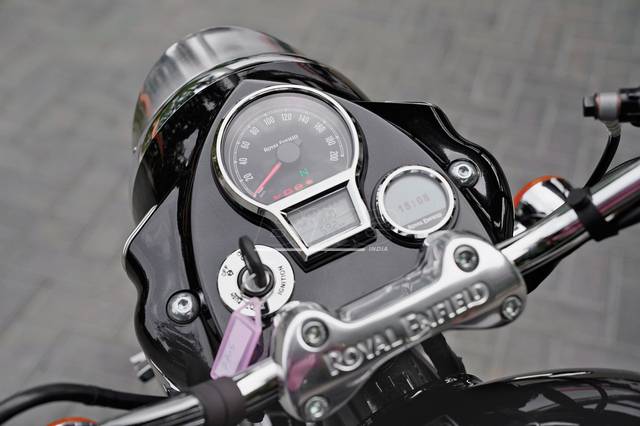
Once in motion, this motorcycle will attract appreciative looks all around but the rider may find themselves stealing glances at the instrument cluster. In an age of connected technology and smartphone pairing wherein it would have been more profitable to slap on a digital console, Royal Enfield’s thoughtful decision to stick to the analogue speedometer is worth appreciation. In our opinion, such attention to detail places the Classic 650 towards the top of the list among purists who appreciate the retro side of a retro-modern machine. They have also catered to the “modern” part by inserting a small digital window for the fuel-gauge.

Rolling along our regular haunts, places where we usually blast by on our Bear 650, the Classic invites one to enjoy a leisurely pace. Even for someone like me who seeks the rush of a fast ride, the Classic’s character is soothing and unlocks a new way of looking at the world. Which is remarkable because between these two motorcycles, the engine and power outputs are similar. Most of the torque is available early in the rev-range, and the connection between the throttle and the rear wheel feels reassuringly direct but, unlike a razor-sharp sport bike, this feeling is relaxed and undemanding. Shifting through the six-speed transmission is a joy and one automatically feels that with the throttle half open, everything is all right with the world. The 648-cc, air-cooled, twin-cylinder engine develops 47 hp at 7,250 rpm and a peak torque of 52.3 Nm at 5,650 rpm. Its overall gearing allows one to carry 100 km/h in sixth gear and while it is difficult to accurately say at what rpm, one can feel there is a generous reserve of power to tap into. Furthermore, the first hint of noticeable vibrations can be felt only past 120 km/h.

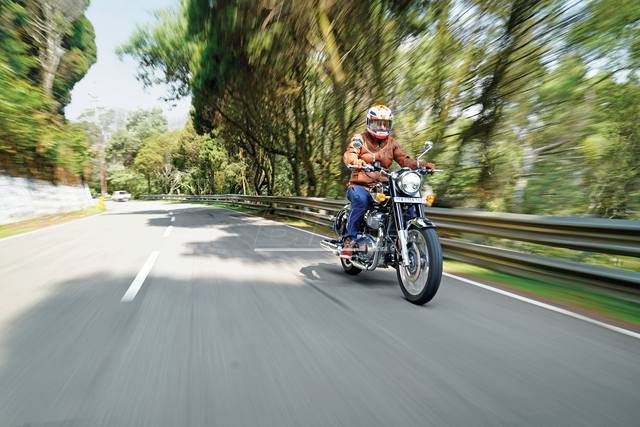
The engine’s powerband is so widely spread that riding the Classic 650 in town is effortless. There is always a choice of at least two gears and no pressure to shift frequently. Carrying 50 km/h in sixth gear is also well within its abilities. It helps that the handling is neutral and the machine complies with whatever the rider asks of it. At low speeds, it becomes apparent that this is the heaviest of the 650s. It requires some strength in addition to skill to be manoeuvred at such pace. Incidentally, placing it on the centre-stand is a good test of one’s ability to manage this motorcycle.
With neutral handling and firmly damped suspension, Royal Enfield have introduced us to a new side of the Classic. Its capabilities are not limited to cruising around town any more because it has improved cornering ability. Despite being heavier, it is quicker to steer than the Classic 500 of yesteryears and does not fight shy of scraping foot-pegs while sailing around a curve. There is remarkable stability on offer as well, which is expected because it has the second longest wheelbase in the 650 range.
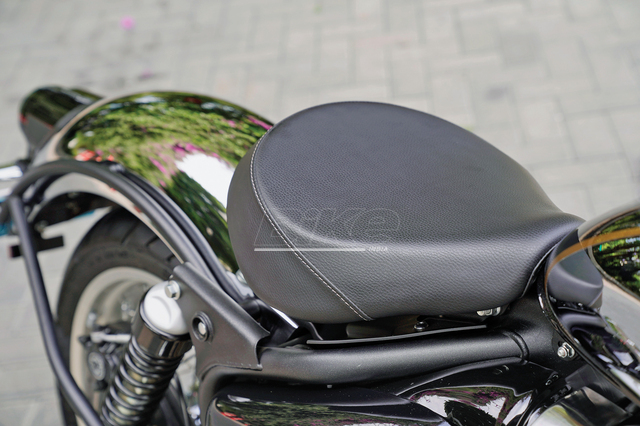
The seat height of 800 millimetres may seem intimidating to some but the way it is shaped makes it a comfortable perch for most people. What we liked about the seating position is that it complements the motorcycle’s undemanding character. There is no load on one’s wrists or legs and the plush seat ensures minimal fatigue when spending hours on the road.
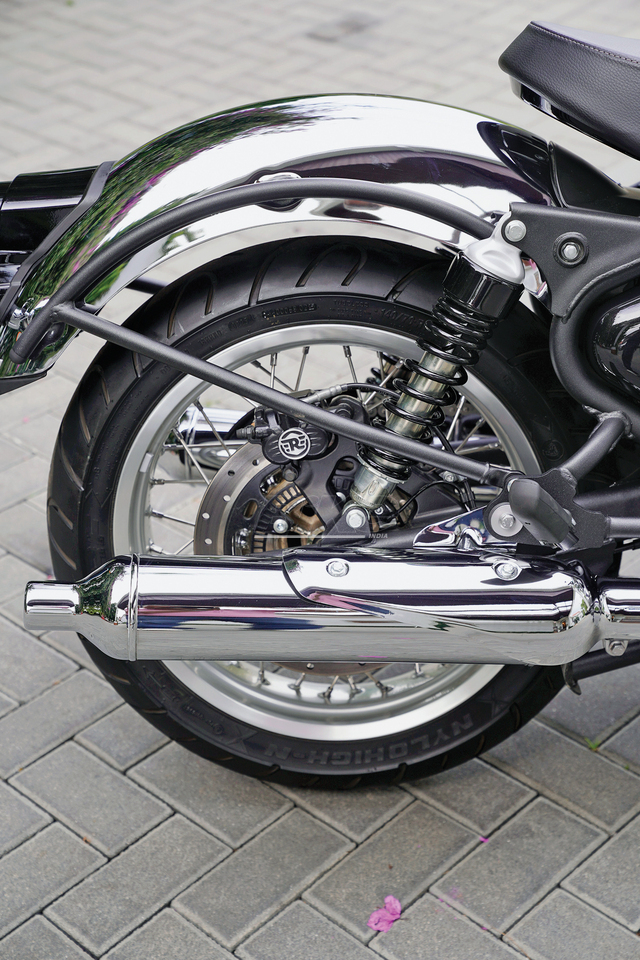
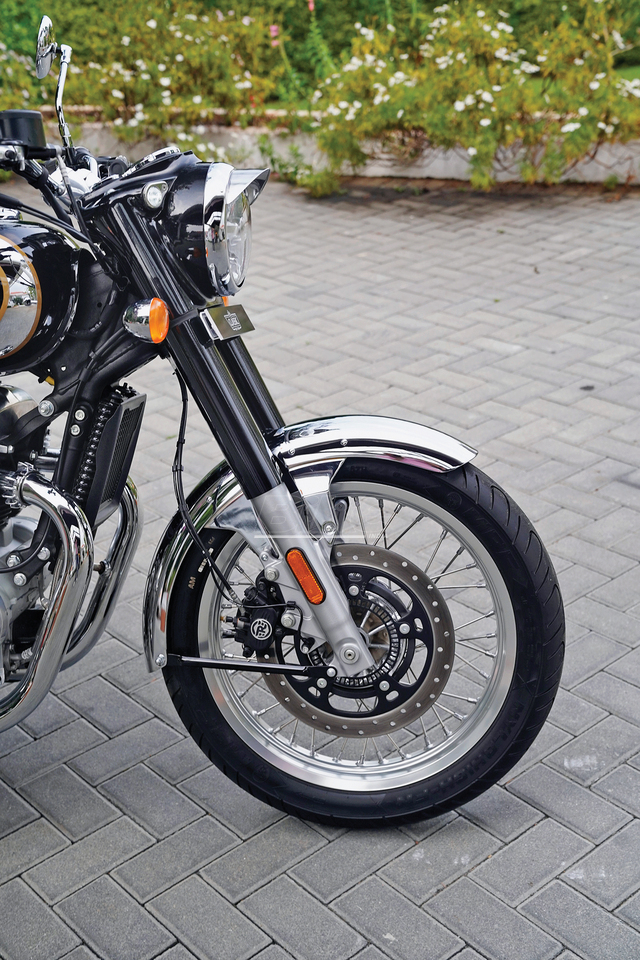

However, the ride quality offered by the firm suspension may not be to everyone’s taste. It uses a 19-inch wheel at the front and an 18-inch one at the rear; with a wheel travel of 120 mm and 90 mm respectively, which is not much. After a few days of riding around town, we were only inconvenienced by it over broken roads. Everything else is manageable for those who enjoy riding quickly. When decelerating, the front end feels reassuringly stable and the ABS intrudes only when riding hard. In any case, that is not what the Classic 650 is meant for, is it?
While Royal Enfield have got many things right with this motorcycle, there is some room for improvement. While enthusiasts may be pleased with its handling, most Classic customers prioritize comfort over corner-carving. Given that India is their home market, Royal Enfield should have optimized the suspension to suit their Indian clientele’s preferences. Furthermore, the twin exhausts that add oodles to the motorcycle’s styling can prove to be a pain if one needs to mend a punctured rear tyre. To get the wheel off for repair, one of the silencers needs to be removed. A different design for the exhaust system or rims that can run tubeless tyres could prove useful.
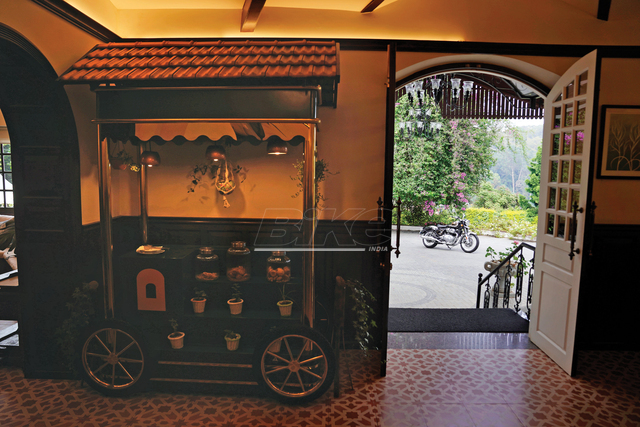
At Rs 3.41 lakh (ex-showroom), the Classic 650 is a worthy successor to the 500. It has a bigger engine, better handling, finer workmanship, and more value for money too. With a few tweaks to optimise it for Indian conditions, it may just be the default retro-modern machine for almost everyone.
However, unlike its predecessors, the Classic 650’s intentions are clear. It is happiest on good roads and not a motorcycle for the explorers. Given that the Classic range revived Royal Enfield’s fortunes in the country, we expect similarly great things from the 650 too.
Watch the full video here:
Also Read: Royal Enfield Interceptor Bear 650 Review


Leave a Reply